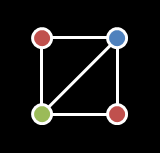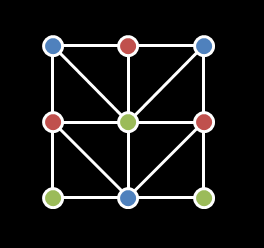For example, str = "ab", the output should be
"ab", "aB", "Ab", "AB"
for str = "abc", the output should be
"abc", "abC", "aBc", "aBC", "Abc", "AbC", "ABc", "ABC"
[Thoughts]
首先,肯定可以用递归来做,每一个节点有大小两种可能。代码可以简单的写成:
1: void ListPermutation(string sample, int depth, string& result)2: {3: if(depth == sample.size())4: {5: prinf("%s\r\n", result.c_str());6: return;7: }8:9: // process low-case char10: result.push_back(sample[depth]);11: ListPermutation(sample, depth+1, result);12: result.pop_back();13:14: //process up-case char15: result.push_back(sample[depth]-32);16: ListPermutation(sample, depth+1, result);17: result.pop_back();18: }
但是,如果考虑空间复杂度的话,这是个指数级的实现。如果字符串有几千行或者几万行,内存就不得了了。
如果换个思路想想的话,其实这个题有简单的解法。因为,大写和小写只有两种变化,其实就是0和1的变化。简单的说,如果字符串长L,那么遍历区间[0,2^L-1],对于任意i,将其转换为长度为L的二进制表示,然后根据每一位二进制是0还是1,来决定输出大写还是小写。实现如下:
1: void ListPermutation(string sample)2: {3: int L = sample.size();4: long end = pow(2, L) -1;5: for(int i =0; i< end; i++)6: {7: // Convert Dec to Binary,8: // return a string to represent binary data with size L9: string binaryRep = ConvertDecToBinany(i, L);10:11: string output;12: for(int j=0; j<L; j++)13: {14: if(binaryRep[j] == '0') //low case15: {16: output.push_back(sample[j]);17: }18: else19: {20: output.push_back(sample[j]-32);21: }22: }23: printf("%s\r\n", output.c_str());24: }25: }
这样的话,整体思路就更清晰,而且内存使用是O(L)。




